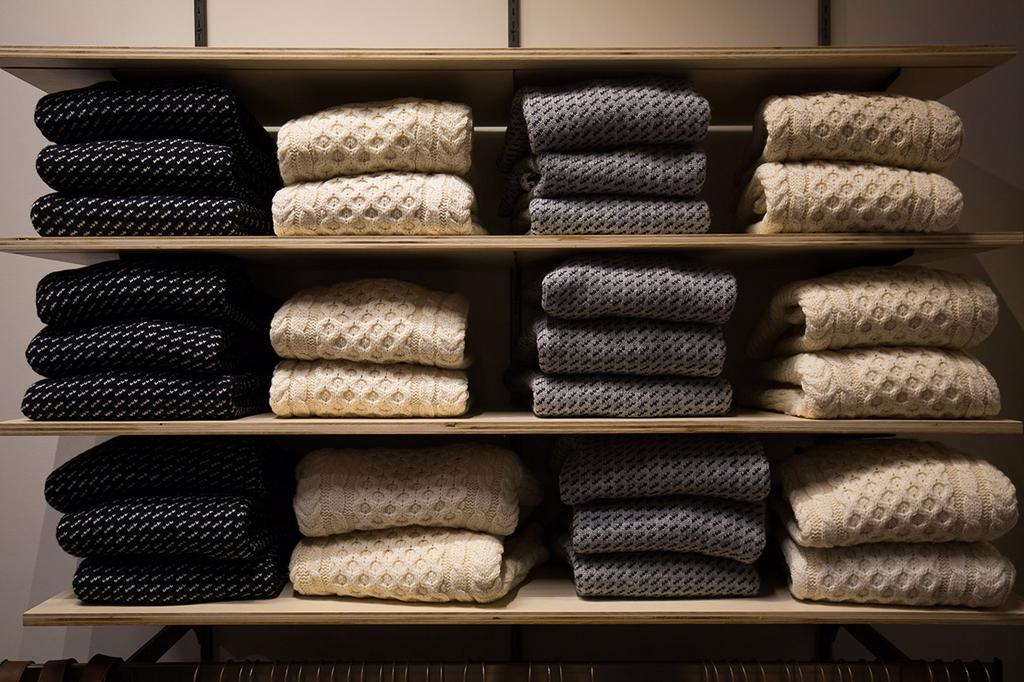As seen in the Baltimore Business Journal
It’s officially the time of the year when chilly weather is settling in and the holidays are on the horizon.
What does that mean for men’s fashion? Well, it means we have a few more options for adding depth and variety to our daily wardrobe. Today, we are going to cover one of those options: the sweater. If you feel overwhelmed when everyone starts talking about sweater weather, then this is the perfect guide for you.
In the sweater world, many options and variations exist, so settle in because we have a lot to cover today. We will talk about the different sweater materials, the various sweater styles, the dos and don’ts of being a sweater-wearing gent and where you should start when adding sweaters to your wardrobe.
Let’s start by exploring the various sweater materials. Know that not all sweaters are made equal and each material offers unique benefits and disadvantages (I’m looking at you itchy wool).
Cashmere boasts the great benefits of incredible softness and warmth. Depending on the cashmere, it can be up to eight times heavier than a standard sheep’s wool sweater. Because of these qualities, cashmere tends to be more of an investment, but know that the price can vary substantially for cashmere products depending on the type of cashmere. The higher the number of plies (2-ply, 3-ply, etc.), the better the quality of the cashmere. If you are going to invest in cashmere, I suggest investing in a higher quality option.
Alpaca is another great, quality option for sweater material. This option is comparably as soft as cashmere, and even slightly warmer. It’s also hypo-allergenic, making it a great option for those of us who are allergic to wool or cashmere. Alpaca is most likely to be found in sweaters blended with other materials.
Wool is the most traditional fabric for sweaters. It is also famously itchy, and some types of wool are itchier than others. This a great option for layering over a button-up dress shirt or a long-sleeve shirt, but I wouldn’t recommend wool for layering with anything that doesn’t have long sleeves.
Cotton and linens are great material options for the warmer months or transitional seasons. These options won’t keep you super warm, but they will provide a little extra warmth.
Synthetic and poly-blends are sweater materials that you will find everywhere, but I wouldn’t recommend these if you can help it. While these options are more affordable, they are not built to last more than a few years. You will be much better off investing in a quality-material sweater that will last.
Now that we have explored various materials, let’s talk about the different styles of sweaters you may find. There are endless varieties and variations, but today I just want to cover seven of the most common types of sweaters you could encounter in the wild.
V-neck — This is a classic and versatile sweater style. The neck shape allows for a shirt and tie to be displayed well underneath.
Crew neck – A classic, simple design, this sweater style looks good with a T-shirt.
Cardigan — Popular with the hipsters and professors, a cardigan opens all the way in the front and can be closed with its buttons. It can be worn either open or closed.
Chunky/cable-knit sweater — This type of sweater is often worn while skiing and has its origins in boating or fishing. It is very warm because of its chunkier material and tighter knit. You can find many different patterns of a chunky sweater.
Turtleneck — A turtleneck sweater has a tall collar that folds over and covers the neck. It is great for colder days or climates. This type of sweater is usually not super heavy and is a good option for layering.
Sweater vest — A sweater vest is a great option if you find a long-sleeve sweater to be overwhelming and constricting. It will keep your core warm without full coverage. Sweater vests provide a slimming look when worn right and look great worn on top of your dress shirt.
Shawl collar — This type of sweater comes from an earlier version of military sweaters. It features a rolled neck that is either crossed or uncrossed in a V-neck shape. It sometimes includes a few buttons at the opening.
OK, so now that you know the basics of sweaters, I want to discuss a few things you should avoid in sweater-wearing.
First, you should never wear a sweater with a zipper unless it is for a sport-related event (think golf or horseback riding). Never wear a T-shirt that shows up visibly under a sweater; this robs you of all the class you gained by wearing a sweater. Lastly, don’t rule a sweater out because it starts pilling or has a loose thread. In sweater-wearing these things are unavoidable, but that doesn’t mean you can’t take care of these issues properly and keep wearing your sweater.
Alright, some of you are excited about sweaters now, but you don’t know how to start. Well, here’s my sweater starter guide for men. If you don’t know what sweaters to start with, look no further:
Wool or cashmere charcoal V-neck sweater
Navy crew neck sweater
Light grey shawl collar cardigan sweater
Black sweater (in your favorite style)
With the information you have just gained, go out into the world and wear your sweaters with confidence. Use your knowledge of classy layering and the people in your life will thank you.
As always, let me know if you want some more sweater knowledge.
Judah Estreicher is the CEO of JBD Clothiers in Baltimore. Reach him at [email protected].


